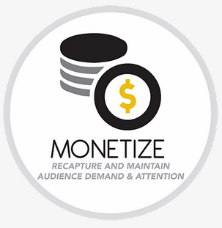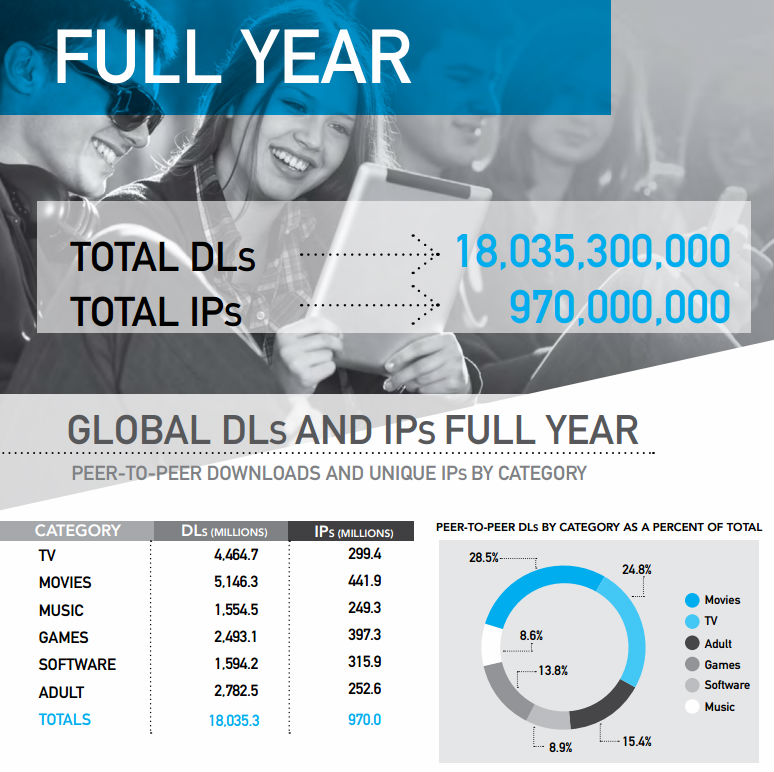 When major movie and TV companies discuss piracy they often mention the massive losses incurred as a result of unauthorized downloads and streams.
When major movie and TV companies discuss piracy they often mention the massive losses incurred as a result of unauthorized downloads and streams.
However, this unofficial market also offers a valuable pool of publicly available data on the media consumption habits of a relatively young generation.
Many believe that piracy is in part a market signal showing rightsholders what consumers want. This makes piracy statistics key business intelligence, which many large companies already actively use.
Netflix Vice President of Content Acquisition Kelly Merryman, for example, previously said that their offering is partly based on what shows do well on BitTorrent networks and other pirate sites.
One of the companies very active on the business intelligence side is Tru Optik. Unlike other monitoring outfits the company does not collect info on torrent users for legal campaigns or other enforcement purposes.
“[Tracking users for lawsuits] is a worthless business model and we feel there is more value in helping content owners better understand consumers so they can monetize their attention than suing them,” Tru Optik CEO Andre Swanston tells TF.
After tracking BitTorrent downloads for several years, today the company released a partial summary of the 2014 piracy landscape. According to its statistics torrent users shared 18 billion files last year, with movies and TV-shows accounting for half of them.
The results offer insight into what’s popular on BitTorrent and where downloaders are based. Game of Thrones is listed as the most downloaded TV-show, for example, and Minecraft tops the gaming list. The United States harbors the most pirates according to the data, followed by Brazil and the UK.

Tru Optik is using this pirate consumption data to help media companies make better business decisions. Piracy signals demand for a product and this data can be used to optimize legal offerings.
“P2P users are some of the most important and influential consumers in the world. P2P consumption is also the best leading indicator of demand for media. If no one torrents your content that means pretty much it’s irrelevant to consumers between age 18 and 40,” Swanston says.
“At the end of the day young P2P users trend more educated, more affluent, more likely to have a child and spend far more of their disposable income on media and entertainment than non P2P users,” he adds.
The gathered data also allows the company to direct tailored ads at P2P users based on their IP-addresses. Hypothetically, this means that a Game of Thrones downloader can be targeted with an ad for a discounted HBO subscription the week before a new season starts.

This positive approach is working well, according to the company. Swanston says that several of the top studios are already on board with the program, and no client has ever asked about enforcement options.
“Several of the world’s top producers of original television and movie content have already started using our audience insight and measurement to drive strategic decisions on millennial facing content production, international licensing of content and evaluating new ways to distribute their content,” Swanston notes.
Tru Optik believes that their approach is much more effective than traditional cookie and social media-based methods. Data comes from real people and allows the company to analyze interest across various titles and content categories.
While not mentioned in the report, there are also downsides to the approach. An IP-address says very little about a person’s age, gender and other demographic variables, for example. On top of that, IP-addresses can be shared with multiple people, and single users can have multiple IPs.
In total there were 970 million unique IP-addresses identified in 2014. However, it is likely that the number of downloaders is lower. In Australia there were more than 30 million torrenting IP-addresses, which is more than the country’s entire population.
That said, the relative popularity of content in various countries and various intercorrelations can prove to be an important marketing tool for media companies. They can cater better to the “pirate” audience and convert people to paying customers. That could very well be a win-win for all involved.
According to Swanston, it’s a must.
“Any millennial focused media company, agency or brand that isn’t preparing for a massive shift to OTT and utilizing P2P audience insight in 2015 risks being left behind by their competitors by 2016,” he says.





